Abstract
Not only is bioethics fundamental to determining or guiding how we live and die, its role as the key interconnecting strand between various disciplines, the public, and decision makers is unique. The works featured here are from a collection entitled “Damnum versus Quaestus” (loss versus gain). They are informed by the lived experience of being with someone (described here as “the patient”) as he or she lives through the process of dying.
Judas Kiss II
Media
The soundtrack is a collage of recordings made of a moth as it circled a lamp in my studio.
Caption
Judas Kiss II is a short film intended to capture the terminally ill patient’s experience of fear, admiration, pain, life, repulsion, doubt, betrayal, hope, truth, falseness, death, order, cyclicality. The film evokes the myriad emotions and feelings experienced by the terminally ill patient, including confusion, pain, doubt, and suspicion about what is happening to him or her in the hospital—the patient’s overwhelming feelings are of being part of an unstoppable tsunami at the end of life and fear about what comes after. This is reflected in the cyclical nature of the imagery and the aching and uncomfortable soundtrack.
Figure 1. Series Three 06:16:02
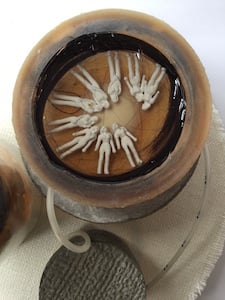
Media
Mixed-media sculpture: porcelain, gold luster, polished concrete, resin, wax, soil, medical tubing, human hair, latex, linen, and thread.
Caption
This artwork explores the use/reuse and ownership of material taken from the human body that manifests the patient’s experience in sculptural form. It is inspired by lockets worn as jewelry; these miniature vessels can contain for their wearer much more than their physical size would suggest.
Figure 2. Series One 06:16:03

Figure 3. Series One 06:16:03
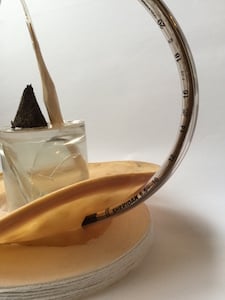
Media
Mixed-media sculpture: porcelain, gold luster, polished concrete, resin, wax, soil, human hair, medical tubing, latex, linen, and thread.
Caption
This artwork explores the patient’s experience of disassociation from his or her physical body in sculptural form.
Figure 4. Series Four 06:16:02
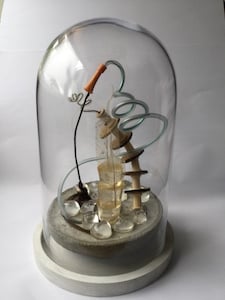
Figure 5. Series Four 06:16:02
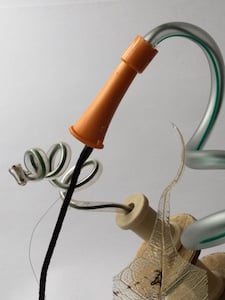
Figure 6. Series Four 06:16:02
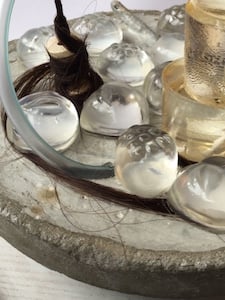
Media
Mixed-media sculpture: porcelain, gold luster, polished concrete, resin, wax, soil, human hair, medical tubing, latex, linen, and thread.
Caption
This artwork physically manifests the patient’s experience of being at the end of life.
Figure 7. Series Three 06:16:01
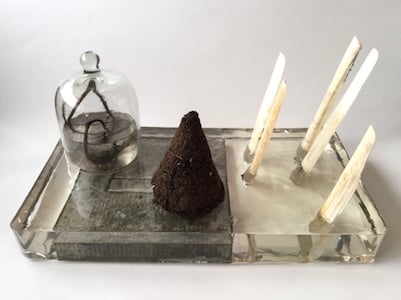
Figure 8. Series Three 06:16:01
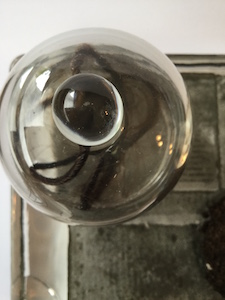
Figure 9. Series Three 06:16:01
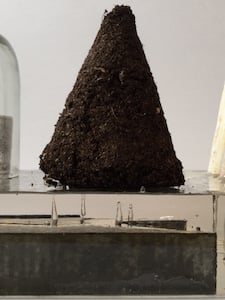
Media
Mixed-media sculpture: glass cloche, soil, resin, and razor shells.
Caption
This artwork depicts the patient’s feeling of suspension in time and physical and emotional fragility as he or she nears the end of life.
Figure 10. Series Four 06:16:03
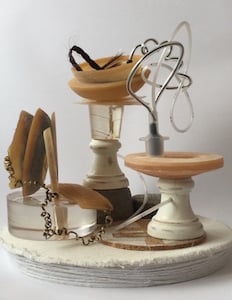
Figure 11. Series Four 06:16:03
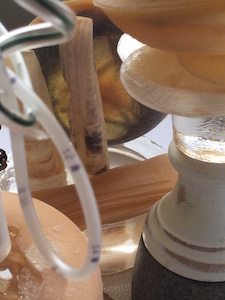
Figure 12. Series Four 06:16:03
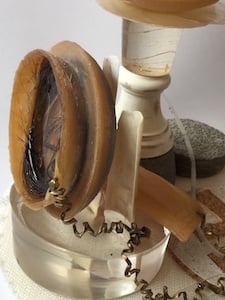
Media
Mixed-media sculpture: medical tubing, razor shells, polished concrete, resin, leaves, cork, human hair, latex, linen, and thread.
Caption
This artwork explores the balance of interconnecting elements within and around the body—their connection to medical treatments and the physical manifestation of the patient’s experience in sculptural form.
Figure 13. Series Two 06:16:01
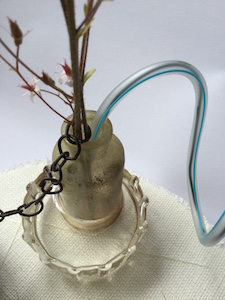
Figure 14. Series Two 06:16:01
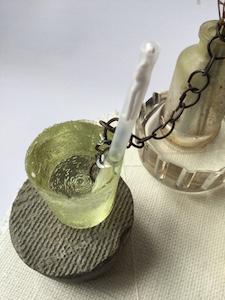
Media
Mixed-media sculpture: medical tubing, metal chains, polished concrete, resin, leaves, cork, human hair, latex, linen, and thread.
Caption
This artwork manifests the patient’s experience of accepting his or her imminent passing, peace, and desire to move into a new state.
Figure 15. Series Two 06:16:02
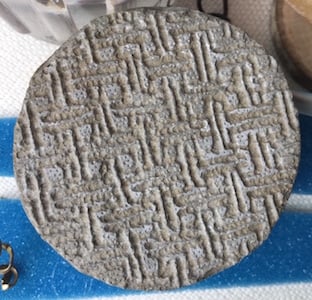
Figure 16. Series Two 06:16:02
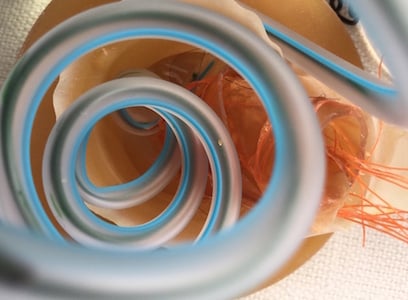
Media
Mixed-media sculpture: medical tubing, metal chains, polished concrete, resin, leaves, cork, human hair, latex, linen, and thread.
Caption
This artwork explores the cyclical nature of living through dying as experienced by the patient.
Figure 17. Series Three 06:16:03
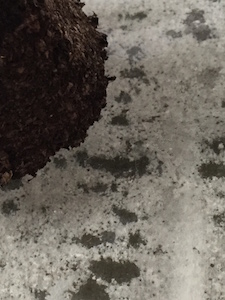
Figure 18. Series Three 06:16:03
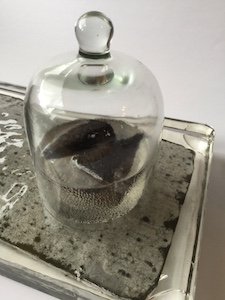
Figure 19. Series Three 06:16:03
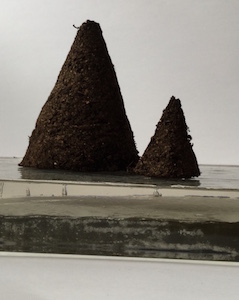
Media
Mixed-media sculpture: glass cloche, soil, and resin.
Caption
This artwork manifests the patient’s experience of reflection on and analysis of his or her past.




